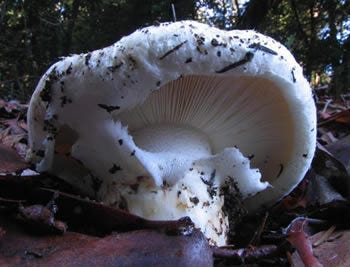Grab Bag: Ask Michele
After a two-month hiatus, I'm back, answering questions about sheep milk and matsutake mushrooms and explaining my absence.
Question: Where have you been?
In early December, I came down with a virus that knocked me out for a couple of weeks. It was followed by a second virus and then a third. So I’ve been paying dues to the virus gods. In addition, I had a ten-day Internet outage that lasted into the new year, along with an issue with my water system, which flooded my kitchen and left me unable to shower at home for over a month. Sponge baths and washing my hair in the kitchen sink became the norm. The good plumber returns tomorrow, as his first fixes didn’t solve the entire problem.
Question: Where can I buy sheep milk in Sonoma County?
There is currently no sheep milk available commercially in Sonoma County. Two of our best sheep farmers, one who made wonderful cheeses and yogurt and another who made sheep milk ice cream and fantastic sheep milk butter have moved out of the area. The best option is to speak to one of our remaining sheep farmers and see if they might be willing to provide some. None of the remaining farmers have big enough operations for me to list them here but I can make suggestions via message.
Question: I’d like to know how you prepare matsutake mushrooms.
Matsutake mushrooms are expensive on the rare occasions when you can find them for sale. In Northern California, your best bet is typically to befriend a expert forager.
Matsutake means pine mushroom; most grow in pine forests. There are regional varieties: those in Japan and the East Coast of the US are unlike the ones in Northern California, where they grow in tan oak forests, and the Pacific Northwest, which exports matsutakes to several states and to Canada.
This mushroom is white, firm, and chewy, with a spicy aroma that blossoms on the palate. It has a distinct fragrance, that David Aurora, author of Mushrooms Demystified, describes as a cross between cinnamon red hots and dirty gym socks. Foragers have to compete with deer and squirrels, who also love them.
When I have matsutakes, I prepare them simply. After removing dirt with a mushroom brush, I cut both the caps and stems into medium julienne, put them in a bowl, cover them with Rainwater Madera, and let them marinate for about 15 minutes. After draining them, I sauté them in olive oil, a sprinkling of flake salt, a spritz of lemon, and, sometimes, a bit of soy sauce until tender. And that’s it! Tip them into a bowl and savor every delicious morsel.
If I want to enjoy them in a broader context, I prepare mushroom risotto using other mushrooms — either maitakes or Trumpet Royales — and put the matsutakes on top. And one of my favorite ways to enjoy them is over mashed potatoes and celery root.
A simple stir-fry can highlight their flavor and texture beautifully, too. For this dish, I slice chicken thighs, cut celery into diagonal slices, cut radishes into thin slices, and crush a couple of garlic cloves. I fry the matsutakes (after slicing and marinating them as described above) and chicken for about 7 to 8 minutes, add the celery, radishes, and garlic and continue to fry, tossing and stirring all the while, until the celery is just tender, about 7 to 8 minutes more, or a bit longer depending on the pan; I use a wok. Next, I season with salt and pepper and finish with the juice of a lemon and a shower of chopped cilantro leaves.
For more information about matsutakes and other wild mushrooms, visit the Bay Area Mycological Society.




Did you extend subscription length for your paid subscribers? That seems to be the policy of other Sub-Stack creators. Feel better -)